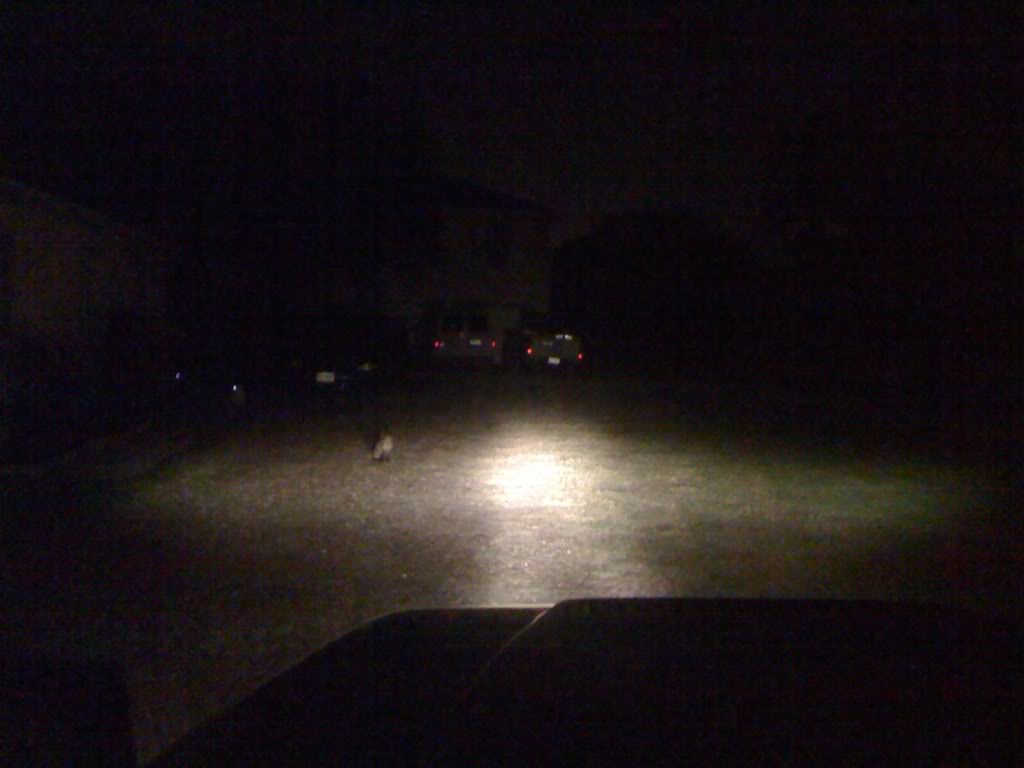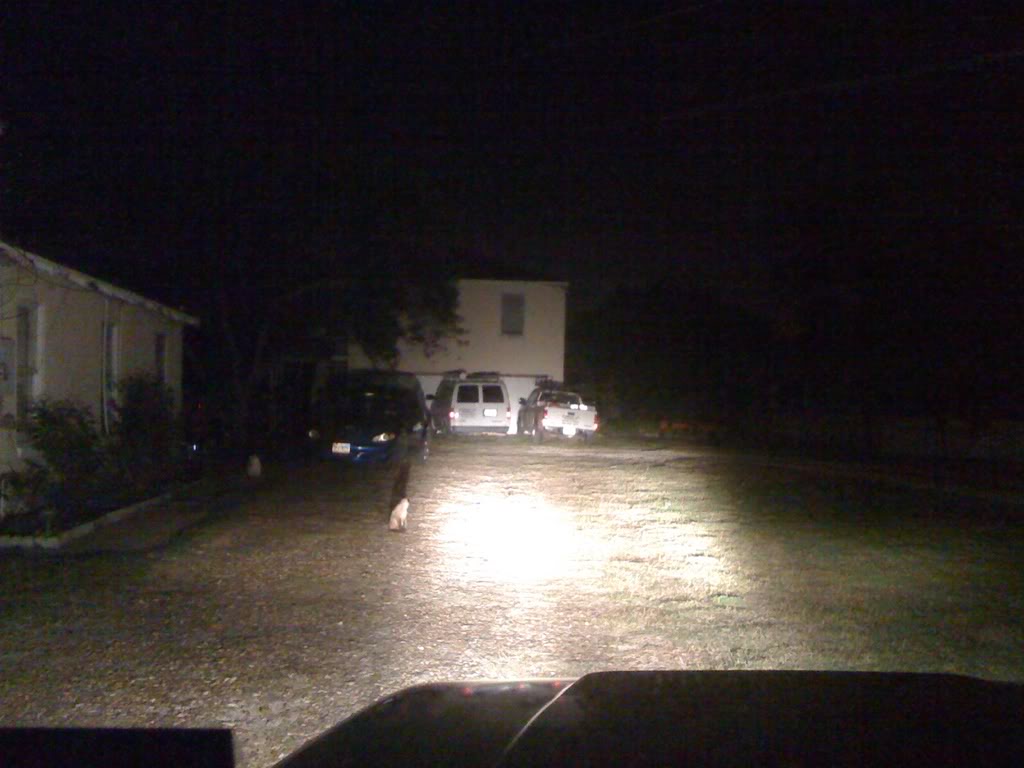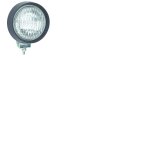superj
Active member
i got this from a thread on another forum. its actually a fairly long thread now, 3 or 4 pages but it boils down to this.
remember a year or so ago, i bought those afterburner cheapo fog lights from walmart? they have the black rubber housings? well, that housing is called a par 36 housing and is actually used on tons of different light applications. if you buy the same light kit, and some other bulbs, ge4509, you get 100w fog lights for less then half the price of kc lights and these won;t corrode because the housing is rubber. the bulbs cost 15 bucks each at napa and are on the shelf.
here is the original 35w after burner light
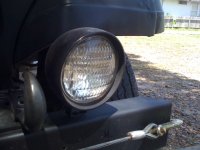
here is how its attached
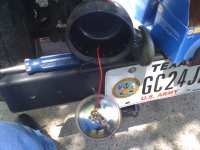
the old bulb was 4411
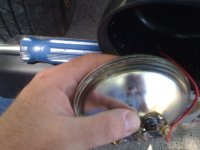
here is the two lights next to each other, see how easy this is
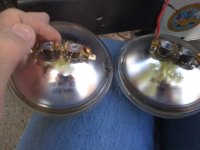
here is the new 100w fog light, it puts out a pencil style beam instead of a flood style light
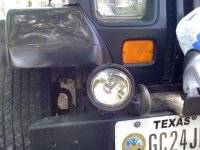
and these suckers are bright, i tried them out, just to see if they would show anything during the day, and htey lit up the tree trunk across the yard at noon so they are bright
remember a year or so ago, i bought those afterburner cheapo fog lights from walmart? they have the black rubber housings? well, that housing is called a par 36 housing and is actually used on tons of different light applications. if you buy the same light kit, and some other bulbs, ge4509, you get 100w fog lights for less then half the price of kc lights and these won;t corrode because the housing is rubber. the bulbs cost 15 bucks each at napa and are on the shelf.
here is the original 35w after burner light

here is how its attached

the old bulb was 4411

here is the two lights next to each other, see how easy this is

here is the new 100w fog light, it puts out a pencil style beam instead of a flood style light

and these suckers are bright, i tried them out, just to see if they would show anything during the day, and htey lit up the tree trunk across the yard at noon so they are bright

